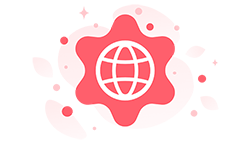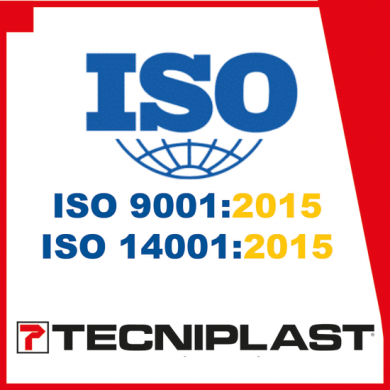
The current version of the Tecniplast website doesn't match your region. Please visit your local website to find information and offerings specific to your country.

The current version of the Tecniplast website doesn't match your region. Please visit your local website to find information and offerings specific to your country.


We are proud to inform all our customers that Tecniplast is the first company in the Lab Animal Industry to obtain the ISO 9001:2015 Certification. We would like to understand better what it means, how much it differs from the old ISO 9001:2008 certification and what are the added values for our final customers. To get appropriate answers we interviewed Dr Roberto Crippa, Corporate Supply Chain Director and Chief Risk Officer.
Roberto, you have managed the project. How complex was it?
The New certification ISO 9001:2015 was a complex task due to its business-wide scope, but it was a smooth process driven by passion. Tecniplast planned the activities to get certified before the end of June 2018. Our certification covers, unlike others, all the activities involved in the design, production, distribution and service for lab animal products. Moreover, the process successfully embraced the ISO 14001:2015 certification as well, taking into account environmental aspects.
To get ISO 9001:2015 certified we succeeded in showing fact-based evidence of:
What are the innovative parts of this new certification?
For sure the topics related to:
Why?
Because for the first time there are requirements for a quality management system where an organization:
a) needs to demonstrate its ability not only consistently providing products and services that meet customer and applicable statutory and regulatory requirements, but also in ensuring that all the pre-requisites for business continuity are set
b) aims at enhancing not only customer satisfaction through the effective application of the system, including processes for continuous improvement and the assurance of conformity to customer and applicable statutory and regulatory requirements, but also at duly considering all stakeholder expectations.
Roberto, is the number of ISO Certificates growing?
Yes! More and more customers are asking suppliers to be certified, which is good even if I suggest to carefully assessing how the ISO9001 principles are put to work, in order to avoid bad surprises.
“Passing the exam” (i.e. the ISO Certification) sets the bedrock, but it is making sure that the ISO9001:2015 key concepts are deeply ingrained in the Organization that makes the difference.
The number of valid certificates to ISO Management System Standards (MSS) rose 8 % in 2016 vs. 2015, according to latest ISO Survey figures (an annual survey of valid certifications to ISO standards issued by accredited certification bodies worldwide. It is the most comprehensive overview of certifications to these standards currently available).
The ever-popular ISO 9001 (Quality Management Systems) and ISO 14001 (Environmental Management Systems) were up 7 % and 8 % respectively.
Why does the ISO 9001:2015 seem much more complex vs the old ISO 9001:2008?
With the New Certification an organization needs to consider a wide range of potential factors which can impact the business and the management system, in terms of its structure, scope, implementation and operations. Impacting factors can be of internal or external nature, and are wide-ranging. External factors can arise from legal, technological, competitive, market, cultural, social and macro-economic ecosystems. Internal factors may be related to values, culture, knowledge and performance of the organization.
Understanding the needs and expectations of interested parties (aka Stakehoders) requires the organization to determine the need and expectations of both internal and external Stakehoders.
In order to succeed in such an endeavor, a real process-based approach and system thinking capabilities are required: not an easy thing to achieve, as it requires company-wide alignment and the nurturing of the appropriate culture and mindset.
What benefits will ISO 9001:2015 bring to Tecniplast Customers?
The ultimate aim of ISO 9001:2015 is to enable effective and sustainable Customer satisfaction, providing the needed business continuity capabilities. We could say that all the standard’s clauses help to provide your Customer with a consistent and rewarding experience from your goods or services, but ISO 9001:2015 actually deals much more and better with “ sustainable and enduring customer satisfaction”.
Indeed, It states that the “organization shall monitor customers’ perceptions of the degree to which their needs and expectations have been fulfilled.” In summary, those are the direct benefits for our customers:
Last but not least, we are strongly committed to the continuous improvement of our products and services, getting valuable information through customer feedback, surveys, dealer reports and Customer intimacy. Caring about Customer Satisfaction is by far more than merely sending out a survey to solicit feedback.
Interesting; what does ISO 9001:2015 say to help us improve relationships?
ISO 9001:2015 is definitely more focused on Customer Satisfaction as well as improving and maintaining Client relationships.
In order to fully understand such a statement, let’s walk through the specific components that provide guidance in this field:
Leadership requirements - Ensuring that business leaders take extra responsibility can only be good news for our Customers and their Clients.
Performance evaluation - A critical part of ISO 9001:2015 deals with performance evaluation in general, with customer satisfaction explicitly and strongly mentioned. Evaluating, taking action, and improving the Quality Management System will help us in continuously improving the delivery of our goods or services.
Control of external providers - Controlling the performance of our external suppliers is another key aspect of ISO 9001:2015. Simply put, the better service our organization receives, the better it can deliver improved goods and services to our Customers.
Operational control - Operational planning and control always has been, and still is, the key to Customer Satisfaction. This includes the entire manufacturing process: sourcing, planning, controlling, design and development, change management, and performance monitoring and management.
Winning and keeping Customers - Almost everything we do to comply with the ISO 9001:2015 standards has an effect on Customers, and therefore on the relationships that we keep with them. The more open, honest, and inclusive we can be with our Customers, the more our relationships can flourish.
Can you summarize what the new ISO 9001:2015 offer more when set against the 2008 version?
In few words it: